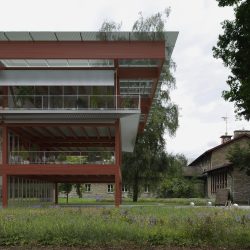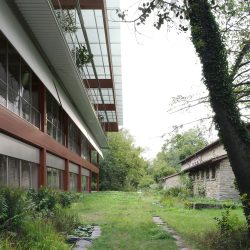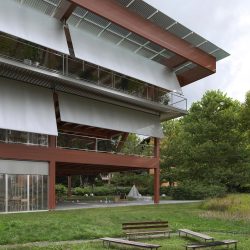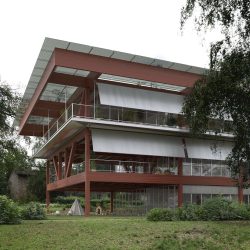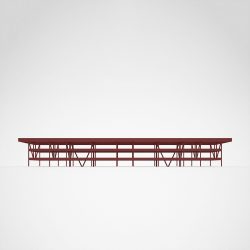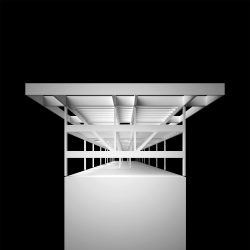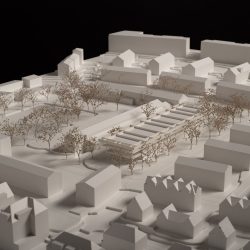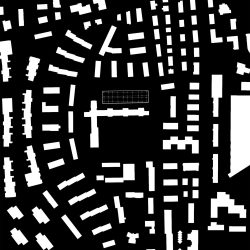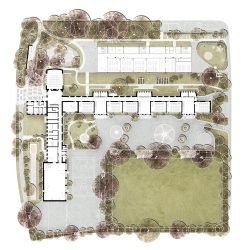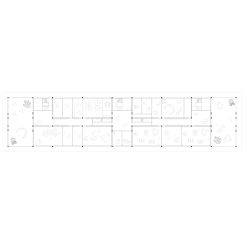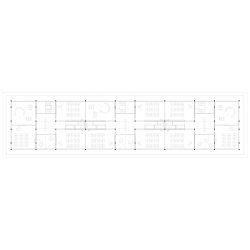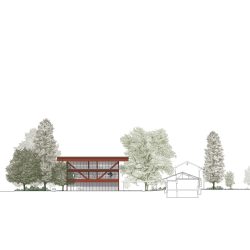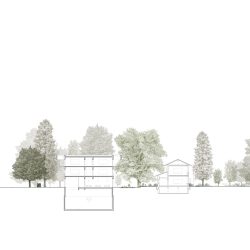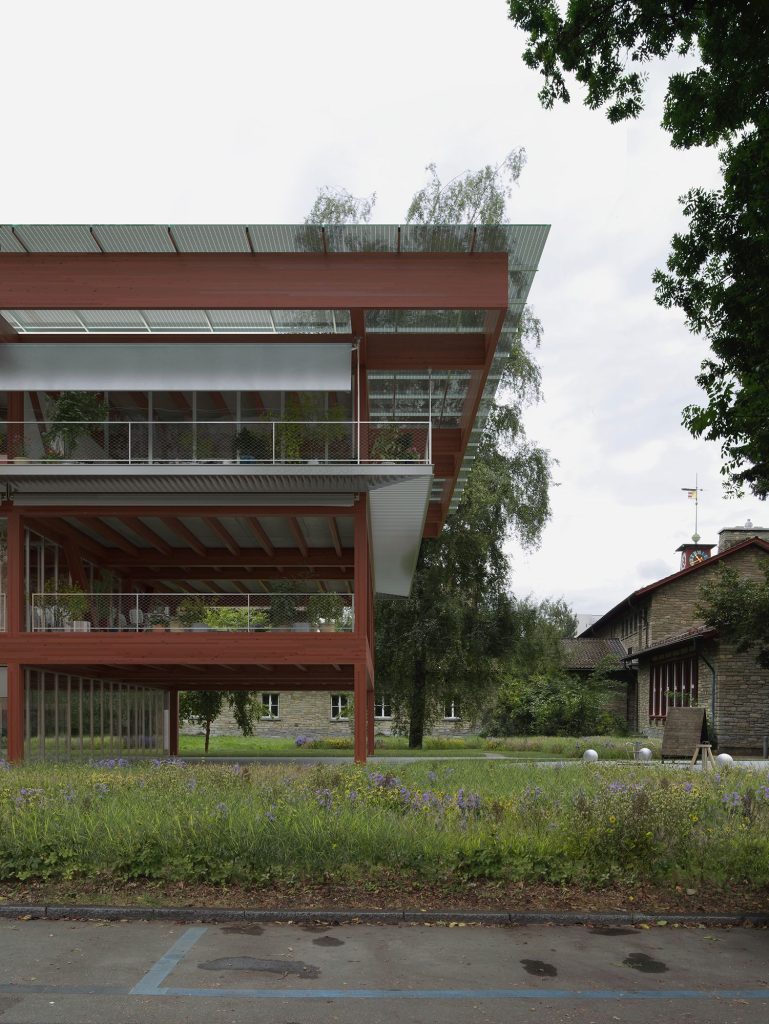
The plot allocated for the extension of the Entlisberg school complex is situated in the
centre of the Moos-Entlisberg district, in a low density “garden city” urban structure
composed of three-story linear buildings.The site has exceptional landscape qualities,
designed by the landscape architect Gustav Amman. The existing building on site by the
architects Kräher & Bosshard is listed in the inventory of protected art and culturalhistorical
objects. The position of the new building preserves the atmosphere of this
precious space.
A three-story linear building is built parallel to the existing school, taking up its typology
and reinterpreting it. In this way, the linear protected garden keeps the existing introverted
qualities. Concurrently, the plot boundaries can be opened and the school complex can be
surrounded by a crown of vegetation. The project resembles a pavilion that reacts to the
garden and surrounding landscape, forming a direct contrast to the heavy and opaque
facade of the existing school.
The building is designed as a light structure, organised on three floors. The ground floor
houses the main entrance and the mensa, while the upper floors contain the classrooms,
which are divided into three clusters, each with its own circulation space. The sports hall is
located on the basement levels and illuminated by light wells. The location and size of the
building were carefully studied to adapt the halls to those of the existing school wing.
Contrarily to the existing building, the halls are conceived as permeable spaces. In section,
the building describes the shape of an inverted cascade, favouring its openness to the
exterior.
The aim of the design concept is based on rationality, sustainability and low-cost
strategies. The extension is designed as a timber structure, and the facade is intended to
give the building overall coherence. The different structural elements are chosen according
to the specific needs of the new school. Thanks to the structural concept, the groundfloor
can be liberated and offer flexibility in its uses.
Using wood as an external element also implies protecting it in a way that will ensure its
ageing in a durable and perennial way, both by using projecting elements on the facade
and directly with a wood treatment. The red tone, which gives the project its identity, was
chosen as a theme, taking some elements from the existing building as reference.
The building makes use of a modular and hybrid structure with timber primary elements
and concrete slabs, on which a variety of elements aiding the building’s internal
management can be hung or suspended. The classrooms benefit from ample outward
openings that favour heat intake in the winter and adjustable sun protections that prevent
overheating during the summertime and raise visual comfort. Lastly, the integration of
photovoltaic panels on the eaves suggests an alternative solution, owning up to the fact
that they are visible, thus also making it possible to use their quality as a “brise-soleil” by
filtering the sun through its cells.
_

